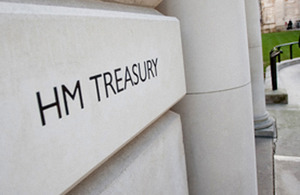Chancellor puts science at heart of Northern Powerhouse
Chancellor George Osborne outlines how science will be central to his plans to create a Northern Powerhouse.

Speaking at the Museum of Science and Industry in Manchester where he welcomed Manchester’s selection as European City of Science 2016, the Chancellor today (Monday 8 December) set out how much of the £5.9 billion of investment in science announced in the Autumn Statement last week will benefit the North of England.
This includes a £235 million Sir Henry Royce Institute for Advanced Materials at the University of Manchester, complemented by satellite centres at Leeds, Liverpool and Sheffield.
Advanced Materials are super lightweight, strong and flexible materials that have applications across a range of industries like healthcare, energy and transport and are expected to be crucial to future scientific innovation.
Earlier in the day, the Chancellor visited the UK National Graphene Institute which, alongside the Sir Henry Royce Institute, will play a key role in developing applications for this cutting edge technology.
The government will also provide £113 million towards a cutting edge Cognitive Computing Centre in Daresbury, Cheshire.
Cognitive computing systems ‘learn’ in similar ways to human development and the goal is to enable not only scientists, but doctors, bankers, retailers and others to extract the full value of the vast amount of data now available to improve products, manufacturing processes and services.
This investment will be supported by a major government push, announced by the Prime Minister today, on maths, science and technology to equip more pupils with the skills needed to work and succeed in high-tech and science-based industries.
This will include 17,500 maths and science teachers to be trained, a new computer science GCSE to focus on coding and the launch of the World’s first code college.
Since 2010, the UK has moved from 14th to second in the Global Innovation Index, and the Chancellor has set an ambition for the UK to be number one.
While at MOSI, the Chancellor also announced £3 million of funding for the museum to create a temporary gallery space with world-class facilities to host a programme of visiting exhibitions.
Chancellor George Osborne said:
Science is key to maximising the economic potential of our great northern cities and is at the heart of our long-term economic plan.
The North of England has huge expertise in this area as is demonstrated by the well-deserved award of European City of Science 2016 to Manchester. The challenge now is to build on that expertise by nurturing new scientific talent, promoting innovation and investing in infrastructure.
The huge investment we are delivering in science will ensure that this happens and that the north will lead the way.
It is great to be back at the Manchester Museum of Science and Industry today, where I launched the Northern Powerhouse earlier this year.
The progress we have made since then is huge, whether it be in cutting edge science, massive transport investment or creating a new mayor for Greater Manchester.
I promised I would deliver a major boost to science in the north as one of the key ingredients in the Northern Powerhouse. In the space of just six months we have gone on to announce major commitments to new science worth more than £450 million.
It is a promise made and a promise delivered, all part of our goal of rebalancing the British economy.
Professor Dame Nancy Rothwell, President and Vice-Chancellor of The University of Manchester, said:
Manchester has a rich pedigree of excellence in science, from Rutherford splitting the atom to our pioneering achievements with graphene.
The award of the European City of Science and Euroscience Open Forum in 2016 is a fitting testament to that history and should provide the inspiration for the next generation of Manchester scientists.
Science is key to creating a Northern Powerhouse and the recent announcement of the £235 million Sir Henry Royce Institute for Materials Research and Innovation to the University of Manchester is recognition of the outstanding research in advanced materials carried out in the city
Science Investments that will benefit the Northern Powerhouse include:
-
£235 million Sir Henry Royce Institute for Advanced Materials at the University of Manchester, complemented by satellite centres at Leeds, Liverpool and Sheffield. Advanced Materials are super lightweight, strong and flexible materials that have applications across a range of industries like healthcare, energy and transport and are expected to be crucial to future scientific innovation.
-
£113 million of government funding to establish a cutting edge Cognitive Computing Centre – in collaboration with IBM – at the Hartree Centre in Daresbury, Cheshire. Cognitive computing systems ‘learn’ in similar ways to human development and the goal is to enable not only scientists, but doctors, bankers, retailers and others to extract the full value of the vast amount of data now available to improve products, manufacturing processes and services.
-
£20 million for an Ageing Knowledge and Innovation Centre at Newcastle University to develop technologies to respond to the challenges of an aging population, improving the quality of life for the elderly whilst reducing reliance on healthcare services.
-
Up to £31 million for Energy Security and Innovation Observing Systems to develop home grown energy supply. This will incorporate two sub surface test centres, for real time feasibility testing of subsurface energy uses, such as shale gas extraction and geothermal energy. The first test centre will be at the former Shell Site in Thornton, Lancashire.
-
£60 million to expand the National Nuclear Users Facility for research into nuclear technology. NNUF gives academia and industry access to internationally leading experimental equipment for nuclear research on radioactive materials at levels greater than can be handled in university laboratories.